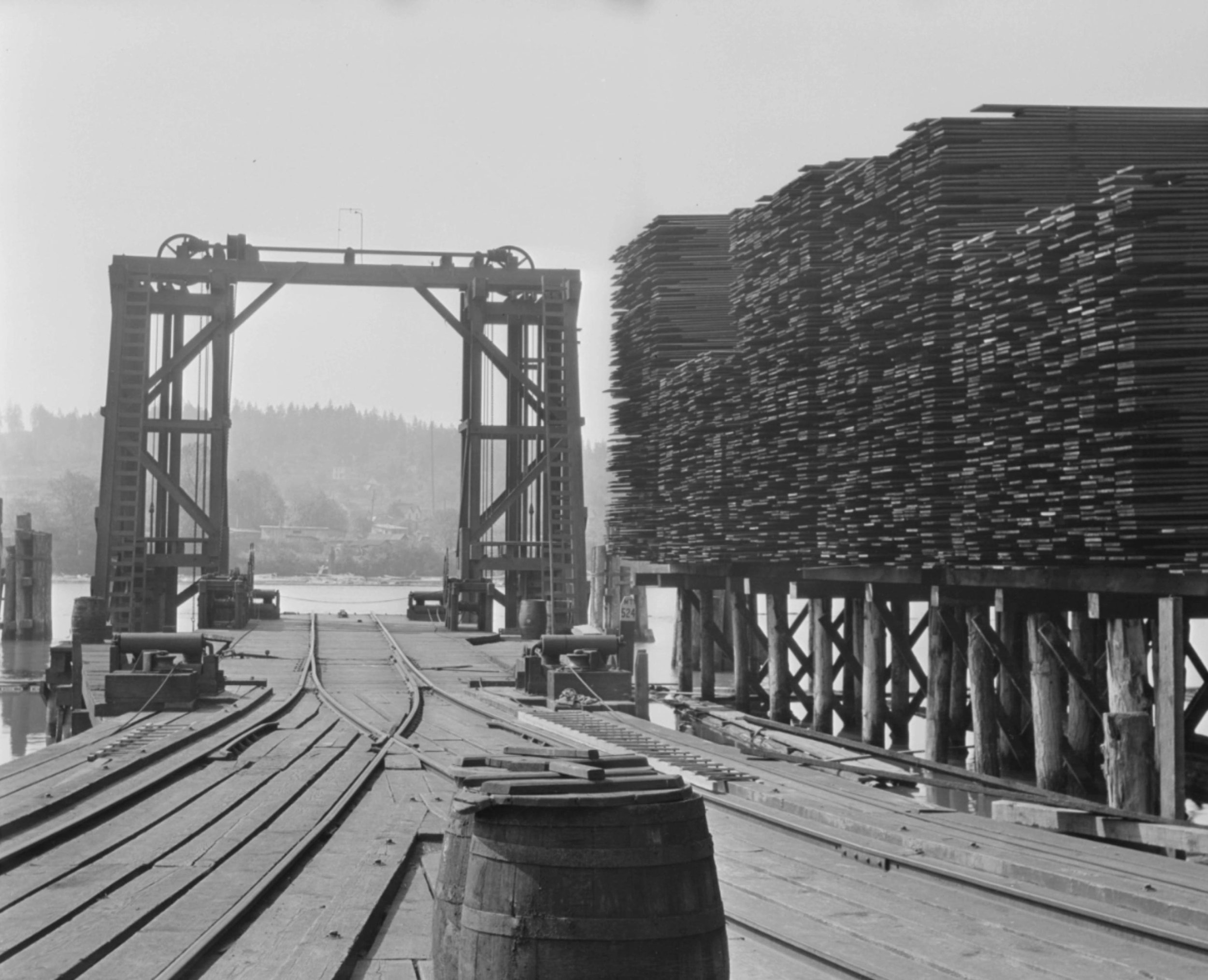Confessions of a Lumber Trader
By Lucy Allen, ESRM ‘25
Telephone poles are rooted along nearly every road in the U.S., wiggling their way into the familiar backdrop of our landscape. You’ve probably never gazed at a telephone pole and wondered what kind of tree it used to be, or questioned if the wood was sustainably sourced, or treated with chemicals during the production process. The untold story of the American telephone pole is an interesting one.
Hardwood materials at the Cedar Lumber Mill in Ballard, 1915 (Image credit: Seattle Municipal Archives).
Despite the disappearance of landlines in recent decades, telephone poles are still a way of life. I spoke with Randal E., a salesman with years of experience sourcing hardwood goods and selling them to big name distributors such as Lowes and Home Depot. Randal prefers the term “power poles”, because they serve a much larger purpose than merely connecting home phones. “Do you still have a telephone?” he asks. The title of “utility pole” is most widely accepted. When asked if the utility pole trade was sustainable, Randal’s answer was nuanced.
Utility poles are not Forest Stewardship Council (FSC) certified, meaning there is no guarantee the forest that was harvested and the people involved completed the job sustainably. Today in the United States, the FSC endorses lands and mills as sustainable by their standards. Randal noted there once was a big push for FSC lumber, fueled by new building codes promoting the use of sustainable materials. In more recent years, that demand has lessened. Across America, there is a housing shortage and affordability has been prioritized above all else. FSC lumber has fallen to the wayside.
FSC certification was never a consideration in the origins of the utility pole business, but it does garner respect from forestry managers. For a tree to qualify as a utility pole, it must be a certain length and circumference, and stick-straight. Such trees are challenging to come by, so pole companies pay a higher price to have first-looks at standing timber auction lands. By selectively choosing these trees out of the lot, pole companies are effectively thinning the forest. This approach is also an effective way to manage forest fires. So while utility poles may not have a stamp of approval from FSC, they can be sustainable in other ways.
Next time you walk past an unassuming utility pole, maybe you’ll ask a few more questions.

